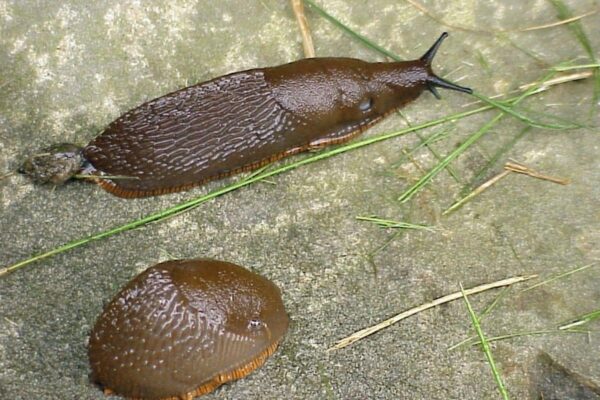Arion slugs
About This Species
Black slugs, also known as red or chocolate slugs, are native to Europe and have been introduced to many countries through human activity. This slug has been well established in BC since the 1940s and is common throughout Southern BC and Haida Gwaii.
This slug is omnivorous, feeding on living and dead plants, rotting organic matter, and even other slugs. Its broad diet makes it a common pest in gardens, parks, and crops. Black slugs are considered a threat to sensitive Garry oak ecosystems in Southern Vancouver Island, and are known to graze on several plants at risk including deltoid balsamroot (Balmamorhiza deltoidea) and yellow montane violet (Viola praemorsa).
Black slugs have both male and female reproductive organs and are capable of self-fertilizing. Each time they mate, they can produce up to 150 eggs, which they bury in a shallow nest in loose, wet soil. Once introduced to a new area, these slugs can quickly reproduce and become too numerous to effectively control.
How to Identify
Black slugs are also known as Red slugs or Chocolate slugs, as they come in a variety of colours from black to brown to rusty red. This species is easy to recognize by the fringe of its foot, which is red with black stripes. When fully grown this slug can reach up to 18 cm in length.

Take Action
Prevention is the best approach.
-
If you need advice about invasive species on your property or you are concerned about reported invasives in your local area, contact your local government or regional invasive species organization.
Prevention tips
For home gardens, a simple slug trap can be made by placing ¼ cup of beer in a plastic cup or aluminum can and burying it so that the edge of the container sits 2 cm above the surface of the soil. Slugs will easily slime over the lip of the container, and native beetles and other ground-dwelling insects will not fall in.
REPORT TO PROTECT BC’S BIODIVERSITY

Use the app
Observe and report to protect BC’s biodiversity

Report through this website
Use our form to tell us what you’re seeing and where.


